












Discover Turku’s best fish specialities at the Turku Market Hall – along with a variety of shops and restaurants to suit every taste. Stop by for lunch and a little shopping!
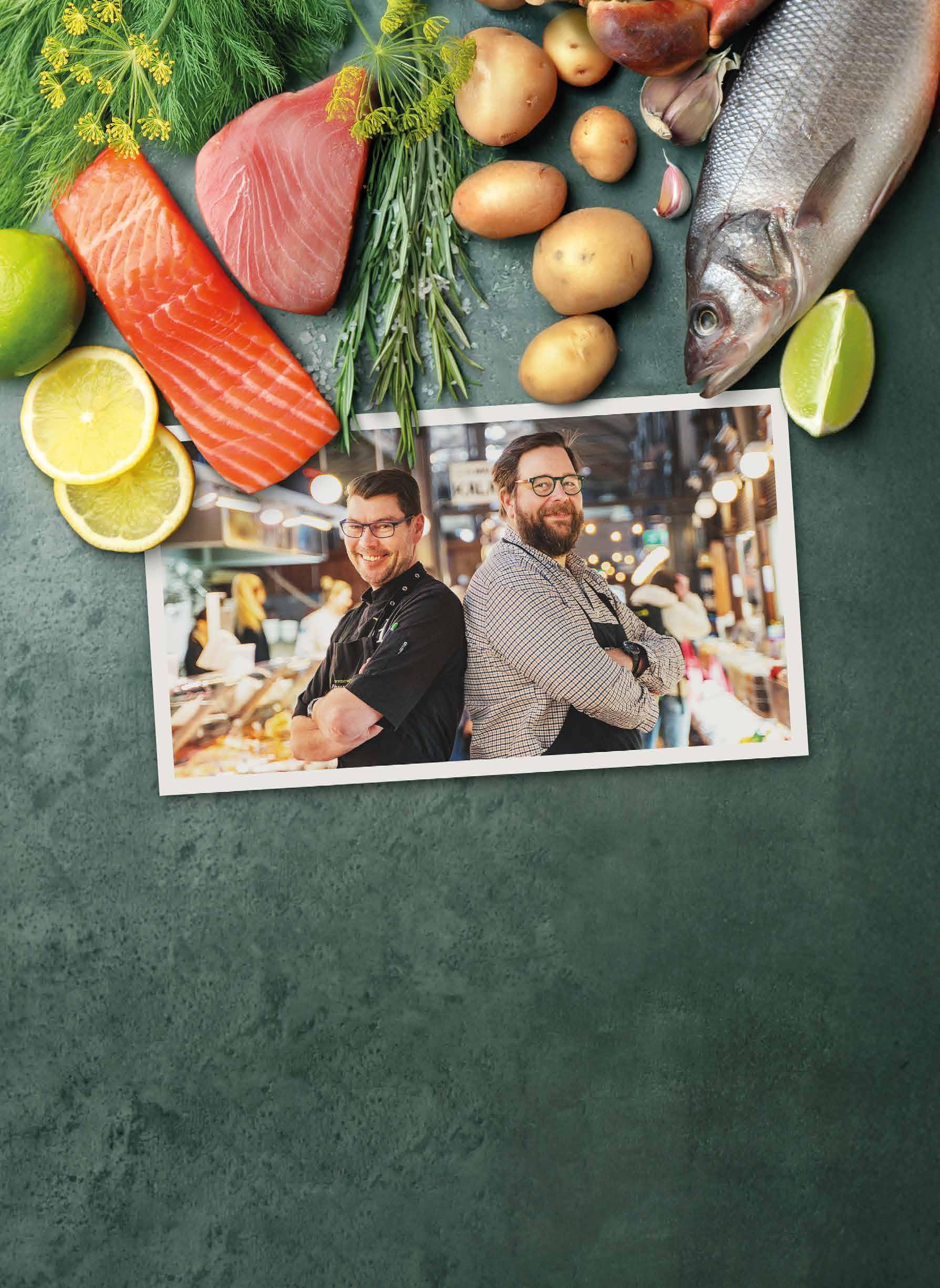
Open Monday to Friday 8–18 and Saturday 8–16. Address Eerikinkatu 16.
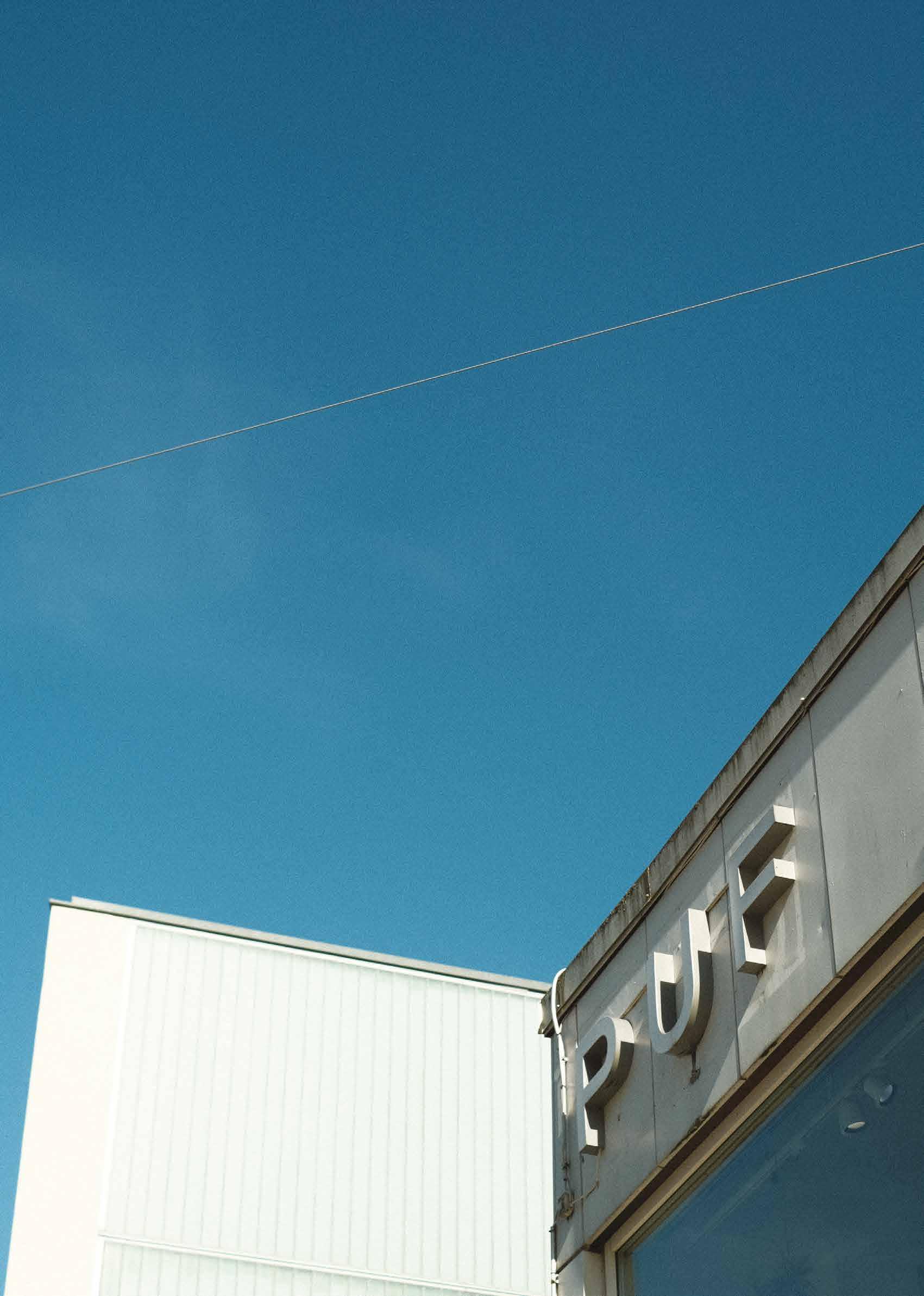


Ruissalo Boatyard’s restaurants offer delightful culinary experiences: Southern-style smoked meats, fish, and vegetarian dishes at Tenlen BBQ & Smokery. Pizzeria Zaké treats you with the Italian-style artisan pizzas.
Avelia Café offers a break on the sunny terrace with sweet and savory café treats.
Activities: Kayak rental & guided yard tours.
Welcome to discover the world of flavours at Ruissalo Boatyard!

Located by the Aura River in the heart of Turku, Restaurant OOBU offers a unique dining experience where tradition meets modern flavors.
Savor fresh seafood and locally sourced ingredients, from smoked salmon soup to lamb and fish dishes, all served in the elegant atmosphere of the historic Bassi House.
All our dishes are gluten and lactose free, crafted with care to ensure a delightful dining experience for everyone.
Whether you're looking for a relaxing lunch or an unforgettable dinner, OOBU is your gateway to the best of Finnish cuisine.
Opening Hours:
Lunch 11:00-14:30
Tuesday 11:00-22:00
Wednesday 11:00-22:00
Thursday 11:00-22:00
Friday 11:00-23:00
Saturday 12:00-23:00
Sunday & Monday closed
Book your table today and indulge in the flavors of the archipelago!
Läntinen Rantakatu 9 20100 Turku
www.oobu.fi info@oobu.fi
+358 (0)20 128 09 00
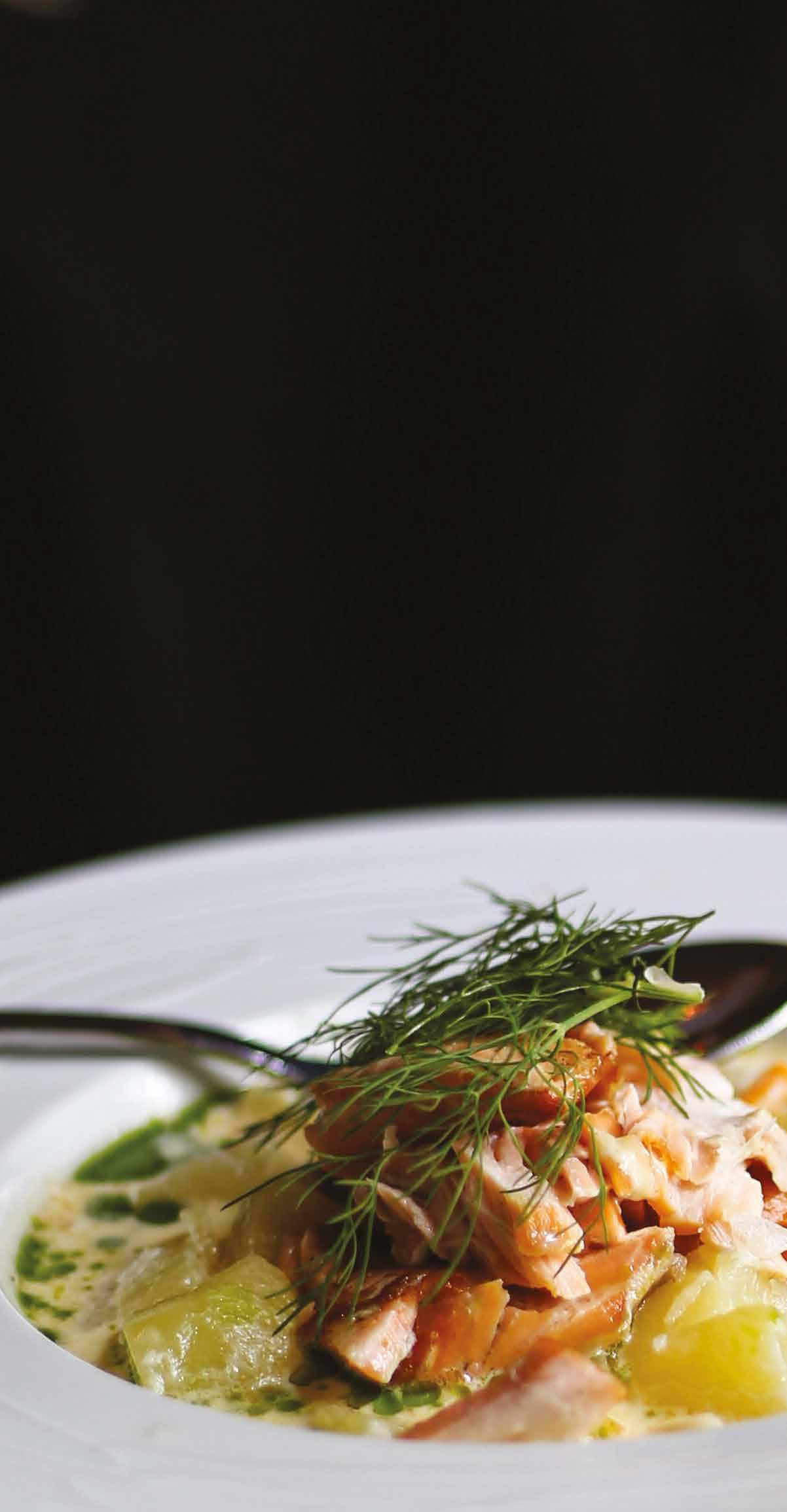
Secure your table at OOBU now—scan the QR code and reserve your spot for an unforgettable dining experience!

Now, forever, Turku! 8
Like an adult amusement park 10
A surrealist on the ski jumping hill 14
Captain Finland and the sauna etiquette 16
The policeman who could write 18
Maps of Turku & Ruissalo Island 20 Hotels providing Turku Times 22 Turku timeline 24
Learning from bones and rubbish 27
Eat Finland 30 Alvar anecdotes 34

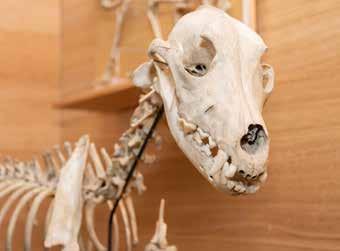
Turku Times
Magazine for Visitors
Issue 1/2025
Summer www.turkutimes.fi
ISSN 2342-2823 (print)
ISSN 2669-8285 (online)
Graphic design & layout
Petteri Mero
Mainostoimisto Knok Oy
Editor in chief Roope Lipasti
Sales manager
Raimo Kurki
raimo.kurki@aikalehdet.fi Tel. +358 45 656 7216
Sales manager
Kari Kettunen kari.kettunen@aikalehdet.fi Tel. +358 40 481 9445

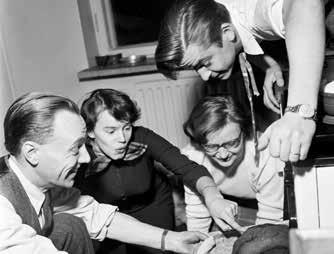
Published by Mobile-Kustannus Oy Betaniankatu 3 LH FI-20810 Turku, Finland
Member of Finnish Magazine Media Association (Aikakausmedia)
Publisher Teemu Jaakonkoski
Printed by Newprint Oy
Would you like to return to your eternal youth? – Column by Hannele Lampela 36 Digital
Cover photos Ruisrock.
Photo: Jaska Poikonen / Visit Turku Archipelago View to the Cathedral.
Photo: Jemina Sormunen / Visit Turku Archipelago Turku Market Hall. Photo: Åbo Creatives / City of Turku Aura river.
Photo: Jemina Sormunen / Visit Turku Archipelago Hannele Lampela. Photo: Niki Strbian



I
am pleased to welcome you to Turku – the oldest and boldest city in Finland.
History is ever present in Turku. However, the oldest city in Finland still encourages you to try something new and unexpected. In Turku, history meets modernity and the local blends with the international in an exciting and intriguing way.
As a city, Turku is also an internationally recognised pioneer in climate action. Our ambitious goal is to achieve carbon-neutrality by 2029 when our city will celebrate its 800th anniversary. We also aim for nature positivity by 2030, which means strengthening biodiversity in the area instead of reducing it. In addition, we are dedicated to promoting the circular economy with a vision of becoming a resource-wise and waste-free city by 2040.
With a total of six universities and universities of applied sciences and their about 40,000 students, our city is guaranteed to be brimming with energy, intelligence, creativity and the ability to renew itself. All our universities are international. The unique status of Åbo Akademi, the only Swedish-speaking university in Finland, is a significant part of the identity of our bilingual city.
The success of Turku is also guaranteed by the long-term, regional cooperation between higher education institutions, companies and the city. This cooperation provides a strong starting point for business and innovation. We are an internationally renowned centre of expertise in fields such as bioeconomy, circular economy, pharmaceutical development and the maritime industry. As an international city of science and culture, we often serve as the stage for international congresses and encounters of experts in different fields.
Those interested in culture can visit plenty of interesting events in our city, such as concerts, theatre, art exhibitions, fairs and festivals all year round. We call our riverbank the Cultural Riverside because you
can find all forms of culture along the river. The city is an experience centre throughout the year.
Turku is also known for its high-quality and versatile food and café culture. A lunch made with fresh ingredients from local producers or a Michelin-starred dinner – our city has much to offer! The milieus in our eating and drinking places are also interesting – in Turku you can eat on a riverboat, in a former prison or admire the city from a bird's-eye view on one of the city's many rooftop terraces. You should also visit our traditional market hall to taste local delicacies and specialities. I can also recommend visiting the Market Square. In addition to market trade and local fresh produce, it also provides a relaxed venue for events and meetings in the heart of the city.
The river Aurajoki is the heart and soul of Turku. That is why you can get to know Turku easily by walking or cycling along the riverbank. The path from the Cathedral to Turku Castle is teeming with history and life. Along the river, you can find beautiful landscapes, museums and art, as well as cosy and high-quality cafés and restaurants where you can take a break from walking.
The sea and nature are also an integral part of Turku. You could say that this is the capital of the world’s most beautiful archipelago. You can sense this maritime atmosphere just a few kilometres away from the city centre on the island of Ruissalo, where you will find enchanting oak forests, pristine coastal cliffs, and winding nature trails.
As a city, Turku is an attractive combination of history, modern urban culture, and maritime experiences. For me, however, Turku is above all a matter of the heart. I hope it conquers your heart during your visit and makes you come back to our city again and again.
Minna Arve mAyor of turku

Our roadside churches cover a timeline from the year 1300 to the 20th century.
Wherever you go, you will have more than 700 years of prayer, faith, and trust in God for company.

Hadvalantie 5, Piikkiö
• Open Mon–Thu 12 noon –6 PM. (June 30 – July 31)

TURKU CATHEDRAL
Tuomiokirkonkatu 1, Turku
• Open daily 9 AM – 6 PM.
• Guide available.
• Summer Café open 11 AM –5 PM (May 5 – August 24)
• Cathedral Museum (admission fee 2/1€)
• June, July and August: International organ music on Tuesdays at 8 PM (duration ca. 1h) and Summer music on Wednesdays at 2 PM (duration ca. 20 min), free entry.
”Captivating Cathedral”
• Guide tours in English on Fri June 27 and Sun June 29 at 3 PM (2€)
• Part of the Medieval Turku 2025 event.


KUUSISTO CHURCH
Linnanrauniontie 57, Kaarina
• Open Su–Thu 10 AM – 5 PM. (June 23 – August 3)
• Guide available.
• Tel. +358 40 3477 177
ST. CATHERINE’S CHURCH
Kirkkotie 46, Turku
• Open 12 noon – 5 PM. (June 9 – August 10, except June 20)
• Guide available
• Tel. +358 40 3477 130
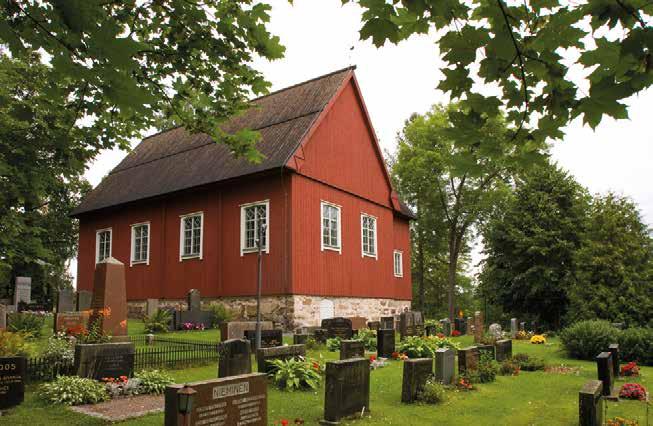
Written by roope Lipasti

Over a decade, Anna-Riikka Carlson visited every one of Finland’s national parks.
When Anna-Riikka Carlson, the fiction publisher at Finland’s largest publishing house, WSOY, turned 40 a little over ten years ago, she set herself a challenge: she would visit every one of Finland’s national parks before she turned 50.
And so she did, visiting the last of the 41 parks last November. The story actually began when her brother, Jarkko Nieminen , ended his successful career as a professional tennis player and returned home with the thought that he never wanted to travel anywhere again. He just wanted peace and quiet at his cabin and to spend time in nature.
“I suggested this national park thing, and we did visit a few together. But some other things came up for him – three children – so the project was put on hold, but I kept going.”
Carlson is the kind of person who has never wanted to measure or tabulate anything in her free time, since she does more than enough of that at work. So at first, it felt a bit strange to be checking off places one by one:
“And what’s more, it ended up being really important to me! When I visited the last national park on the list in November, I felt a bit empty. Like, what now?”
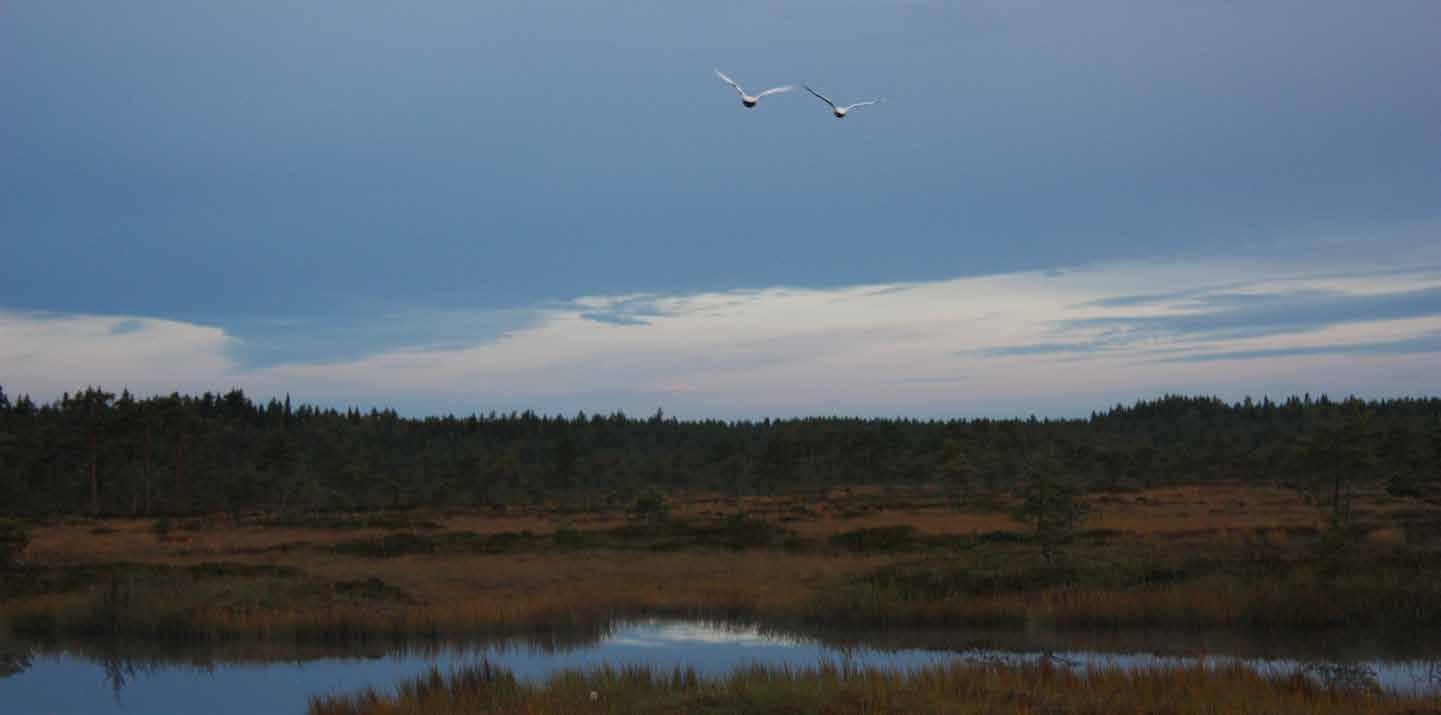
Well, life goes on, and there’s nothing that says you can’t visit the same natural site twice. In any case, it was a wonderful experience:
“I saw more Finnish nature than I ever would have otherwise. And on top of the natural sights, I got to visit a lot of cities and places that I otherwise probably never would have. Another great thing was that I got up the nerve to ask friends to come along. People suggest going for coffee all the time, but it was kind of a big deal to ask somebody if they wanted to go to a bog with me. It deepened a lot of friendships, and of course my own relationship with nature – I read a lot of nature literature.”
Originally, Carlson had a rule that she could check off a park if she had hiked at least ten kilometers there. Sometimes the trip could take a week, even.
“But some national parks are so small that you can’t really cover ten kilometers without walking in a circle. So what I did was choose the nicest route, even if it was shorter. The deciding factor could be something like a nice swimming spot along the way. I might also spend part of the day just reading a book on an outcrop of rock.”
Carlson says that for her, as a middle-aged person, hiking was a big deal at first, physically speaking:
“I had never done anything like that before, and I had never been particularly physically active. But I managed, and it was fun! I’m now on a bit of a mission to make the experience possible for others. I know a lot of women my age who would like to experience something like this but don’t dare do it alone. The intention is to organize at least a couple of trips for a slightly larger group.”
Carlson has a clear favorite among the national parks: Urho Kekkonen National Park in Lapland.
“Partly because it was my first, back in 2015. It was like an adult amusement park. It was hard to believe how much fun it was! And the place is beautiful. There are forests, lakes, ponds, fells – everything that Finnish nature can offer. We stayed overnight in backcountry huts, and it gave me the same sort of feeling as being in a library – that somebody put this here for me, and it’s free!”
A national park is a nature reserve whose primary purpose is to safeguard biodiversity. Each park represents a typical Finnish natural environment at its best, from the fells to the archipelago. The parks’ hiking trails are designed and maintained to guide visitors through the landscape in a nature-friendly way. You can stay overnight in tent camping areas, lean-tos, backcountry or rental huts, or in accommodations provided by private companies.
Finland’s first national parks were established in 1938, but their existence has only really been promoted since the 1970s. Today, there are 41 national parks in Finland, and they are located all over the country. The closest national park to any larger city is usually no more than an hour’s drive away. If you can’t make a trip to an actual national park, there are smaller nature trails in every city and municipality. They offer another convenient way to explore the Finnish forest.
For more information about Finland’s national parks, visit: www.luontoon.fi/en
The trails in the national parks are so well marked that it’s practically impossible to get lost. Every park has something special about its natural environment, though for the most part, you’ll have to be content with observing the vegetation because you’re unlikely to come across any larger animals:
“They know how to stay out of sight of people. In Lapland, I did see birds that we don’t have in the south, like willow grouse and Siberian jays. And when I was in the north for the first time, I was impressed by even ordinary animals, like reindeer. I wouldn’t be as thrilled by seeing something like that in quite the same way anymore.”
No special hiking equipment is necessary, at least not if you’re only going for a day:
“It’s worth having good shoes. I personally love my hiking boots – my husband thinks I use the word ‘love’ quite freely – but even regular sneakers are enough. And of course, it’s a good idea to take some snacks too! And a good friend. Though it can also be nice to hike alone!” s


See and feel real ships, exhibits and stories! From historic tall ships to intricate scale models

From Children’s Maritime Museum to rugged warships
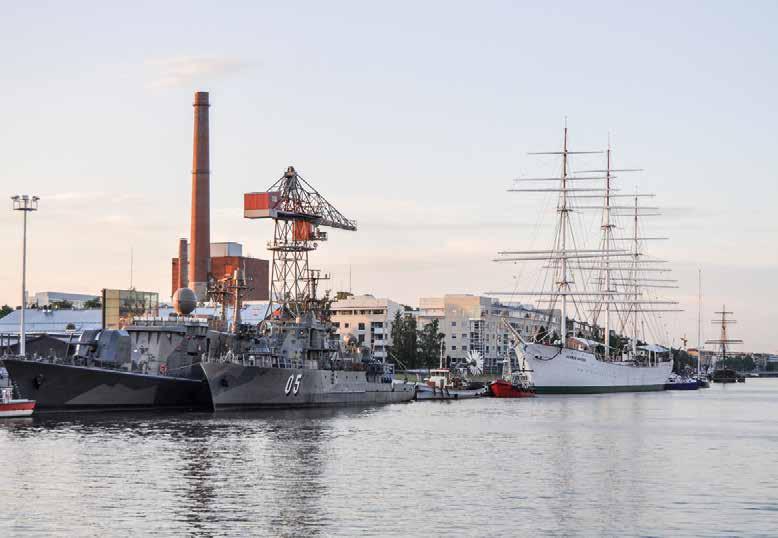
The museum ships and exhibitions are open daily from June 9th to August 17th, 10 a.m. to 6 p.m.

72 20100 Turku


www.forum-marinum.fi #forummarinum
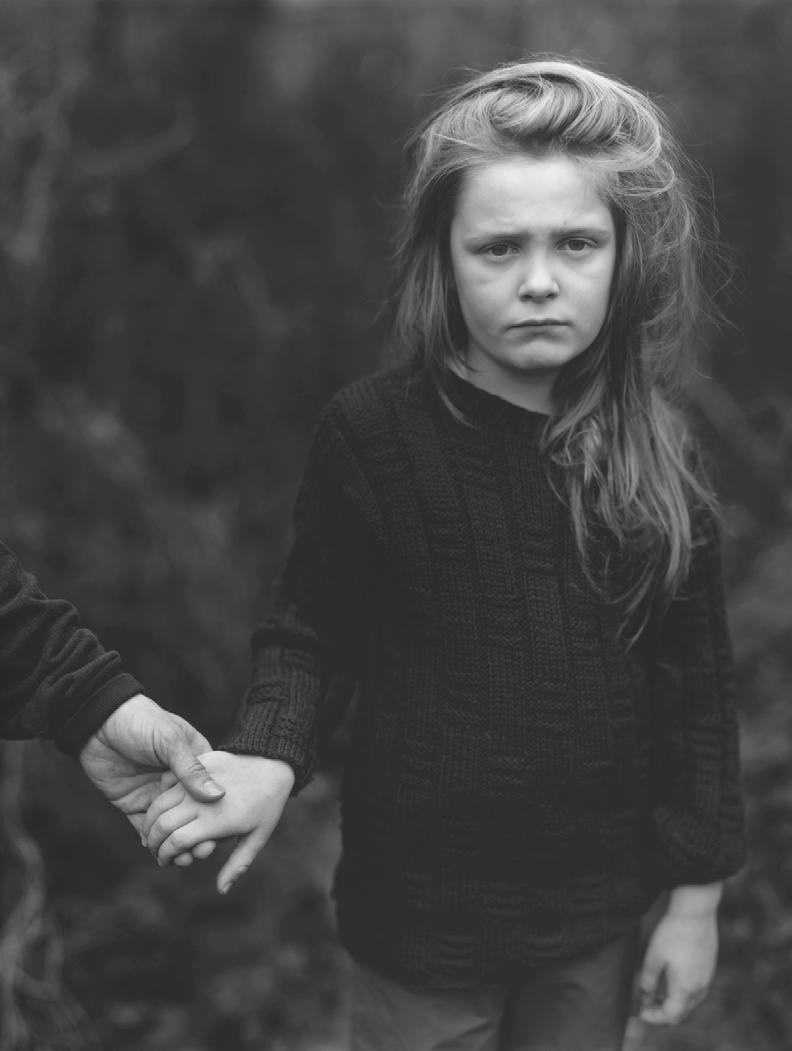

What do archaeological discoveries reveal about the daily life of past ages? Turku’s old Convent Quarter comes to life in the renewed Aboa Vetus museum.

Arkeologian ja nykytaiteen museo
Museet för arkeologi och nutidskonst
Museum of archaeology and contemporary art
Itäinen Rantakatu 4–6, Turku | Östra Strandgatan 4–6, Åbo | www.avan.fi

A Finnish gallerist has added a jumping suit worn by legendary ski jumper Matti Nykänen to his collection because, in his opinion, Nykänen was the most surrealistic athlete in the world.
THe Art BANk gAllery, on the island of Pargas in the Turku archipelago, houses the only private exhibition of Salvador Dalí works in the Nordic countries. Gallerist Ted Wallin, who has in numerous interviews assured incredulous journalists that he is the reincarnation of Dalí, has now acquired for his collection a jumping suit that ski jumper Matti Nykänen wore at least during a Four Hills Tournament in the 1980s. According to an interview with Helsingin Sanomat (6 February 2025), Wallin had a clear motivation: “Nykänen
A comment from the beginning of his singing career is so surrealistic that even Dalí would have been proud to hear it: “The album is already recorded. Next, I’m going to take singing lessons.”
was the most surrealistic athlete in the world. We [surrealists], after all, cultivate a slightly-more-than-reality feeling.” He has a point, though the competition for the title of the world’s most surrealistic athlete is fierce. What makes Nykänen more qualified for the title than, say, larger- and stranger-than-life figures like Diego Maradona and Dennis Rodman?
Nykänen’s particular strength is his wide-ranging surrealism. He resembles Salvador Dalí in that a total work of art includes not only one’s artistic production, but also the artist’s personality and, in practice, everything he does. The Dalí Theatre and Museum, which Dalí built in Figueres, Spain, and opened in 1974, uses paintings, sculptures and various decorative objects to create an assemblage that depicts Dalí and his art, with each room also featuring an independent work of art.
The artwork created by Nykänen’s life is performative (although a monument entitled Höyhen, ‘Feather’, has been erected for Nykänen in his hometown of Jyväskylä), a story that bounces in different directions in an almost dreamlike (and sometimes also nightmarish) way, like the legendary film Un Chien Andalou made by Dalí and Luis Buñuel. The story begins with an incredible sports career (ten gold medals from the Olympics and World Championships between 1981 and 1990, plus 48 World Cup wins and four overall victories), during which he made headlines not only for his sporting achievements but also for his colorful personal life. The peak of his kiosk break-ins and other drunken antics was his winter 1987 “training camp” in Spain: Nykänen, after a dispute with the Finnish Ski Association, goes south for two weeks to party, returns for the World Championships and wins silver.
After his sports career, Nykänen followed Dalí’s advice that if you want people’s attention, you have to provoke them, and he worked as both a striptease dancer and a pop singer. A comment from the beginning of his singing career is so surrealistic that even Dalí would have been proud to hear it: “The album is already recorded. Next, I’m going to take singing lessons.”
Nykänen’s steadily worsening alcoholism ultimately turned his epic-turned-comedy into a tragedy. At first, Nykänen’s domestic and other violence brought him suspended sentences, until the drunken stabbing of a male acquaintance brought him a prison sentence of over two years in 2004. Nykänen’s life ended in 2019. He was only 55 years old at the time.
In a new documentary by Olli Laine, Nykänen’s sister Päivi sums up his tragedy as follows: “The gift he had was too great for him to bear.” The weight of Nykänen’s burden is all the more evident considering that Nykänen was only diagnosed with ADHD as an adult, and that not only journalists, fans and managers, but also officials from the Finnish Ski Association more often took advantage of, mocked or enabled Nykänen’s destructive behavior than acted as his friends or supporters. Perhaps he would have even endorsed Dalí’s words: “It is not me who is the clown, but this monstrously cynical and so unconsciously naive society, which plays the game of seriousness in order better to hide its madness.”
In addition to his sporting success and his ultimately sad life story, Nykänen is especially remembered for his one-liners, which in their absurdity and funniness rival those of Dalí. For example: “The greatest tragedy of today’s youth is that I’m not one of them anymore.”
A few of Nykänen’s best: “Life is the best time to be alive” / “Love is like a ball of string – it begins and it ends” / “Germany-Austria is my second homeland” / “Having experienced everything, I can say that there are still things left to experience.” And one more, which meets the demands of surrealism’s main theorist, André Breton, by effortlessly brushing aside the shackles of logic and limitations of everyday reality: “You can’t undo what you haven’t done.”
Finally, it’s worth remembering that ski jumping itself is a surreal sport, in which you fly on skis for a distance that can top 200 meters down a hill. Perhaps the most incredible performance of Nykänen’s career was at the 1982 World Championships in Oslo, where on the last day of the competition, the large hill was shrouded in a dense blanket of fog. Any sane person would have thought the competition should be canceled, but the officials decided otherwise. Many jumpers fell or landed their jumps dozens of meters shorter than normal. Nykänen, on the other hand, set off from the top of the jumping hill (as if determined to prove true the famous quote of Dalí’s, “The only difference between me and a madman is that I’m not mad”), briefly emerged from the fog at the take-off, and flew unseen to the bottom of the hill, where he materialized again and won gold. That jump was like something straight out of Salvador Dalí’s restless dreams. s

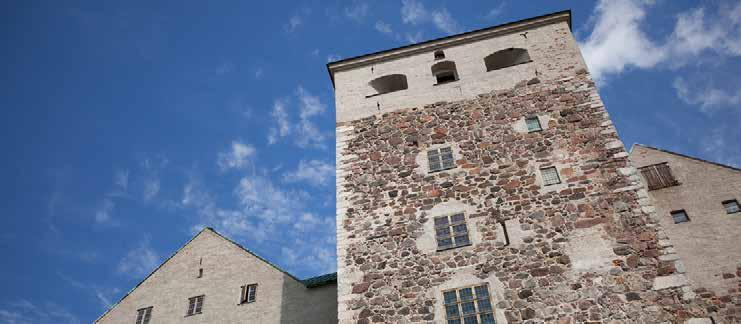
The stately Turku Castle has guarded the mouth of the Aura River since the late 13th century. Within its tall granite walls, history has unfolded in remarkable ways. Over the centuries, the castle has been both defended and besieged, with its governors changing over time. During Duke John’s era, it became a stage for courtly life. The medieval rooms of the keep and the Renaissance floor built by the duke allow visitors to experience both the grandeur and hardships of times past.
Crown’s People
– Exhibition on the Castle’s Soldiers and Defence Who were the soldiers, and where did they come from? What was their daily life like? Who else played a crucial role in maintaining the castle’s defences? And what happened when news of an impending siege reached the castle? Discover the answers in this engaging exhibition.
Guided Tours turunlinna.fi/en
Opening Hours Tue–Sun 10am–5pm / 2 June–31 Aug Mon–Sun 10am–6pm Linnankatu 80, tel. +358 2262 0300 | turunlinna@turku.fi

The Qwensel House, the oldest surviving wooden building in Turku by the Aura River, showcases an 18th-century bourgeois home alongside a 19th-century pharmacy. The Pharmacy Museum features Finland’s oldest preserved pharmacy interior, dating back to 1858. Visitors can also explore the workrooms of a self-sufficient pharmacy, including the materials room, two laboratories, and an herb room.
In the Qwensel House, step into the life of Joseph Pipping, the father of Finnish surgery and the home’s most famous resident. The interior is decorated in the Rococo and Gustavian styles of the late 18th century, offering a glimpse into the elegance of the era.
During summer, the courtyard comes to life. Children can play apothecary and customer in the children’s pharmacy, while visitors can enjoy sweet and savoury delights at the quaint Café Qwensel, which also serves homemade beverages inspired by 18th-century recipes.
Guided Tours qwensel.fi/en
Opening Hours Tue–Sun 10am–6pm Läntinen Rantakatu 13b, tel. +358 2262 0280 | apteekkimuseo@turku.fi
Luostarinmäki is the only wooden quarter that survived the Great Fire of Turku in 1827. The over 200-year-old buildings remain in their original locations, forming a unique historical environment in the heart of the city. Walk through the alleys, yards, and homes, and immerse yourself in the lives of the people who once lived here—from schoolchildren and midwives to musicians and circus performers.
In Children’s Luostarinmäki, history comes to life through hands-on activities. Kids can play in the cottage, the Little Watchmaker’s Shop, and the shop, exploring the past through interactive experiences. Activity spots throughout the site provide a fun and engaging way to learn about daily life in the old days.
Guided Tours luostarinmaki.fi/en
Opening Hours 6 May–1 June Tue–Fri 9am–5pm, Sat–Sun 10am–5pm / 3 June–17 Aug Tue–Sun 10am–6pm / 19–31 Aug TTue–Fri 9am–5pm, Sat–Sun 10am–5pm Vartiovuorenkatu 2, tel. +358 2262 0350 | luostarinmaki@turku.fi

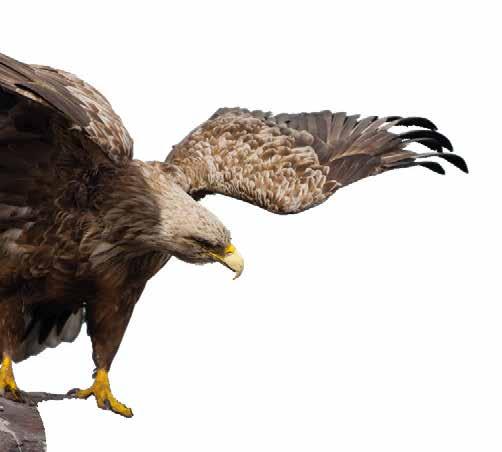
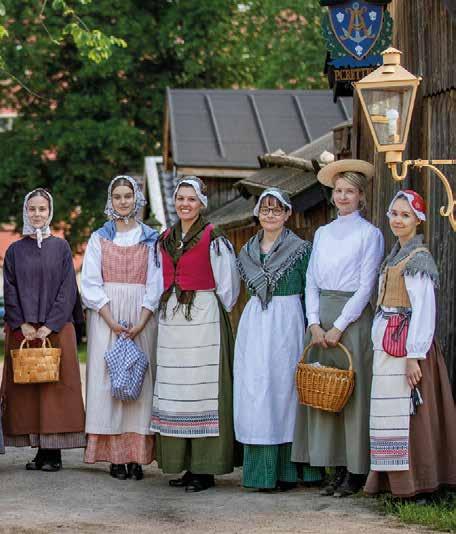
Housed in a beautiful Art Nouveau building from 1907, the Biological Museum showcases Finnish flora and fauna, stretching from the Turku archipelago in the south to the fells of Lapland in the north. Take a peek at the outer archipelago in spring or marvel at the rich biodiversity of a Ruissalo grove.
A perfect destination for nature lovers, the museum is especially popular with children and families. In addition to its immersive natural dioramas, the museum hosts temporary exhibitions that highlight contemporary themes and phenomena related to wildlife and nature. biologinenmuseo.fi/en
Opening Hours Tue–Sun 9am–5pm Neitsytpolku 1, tel. +358 2262 0340 | biologinenmuseo@turku.fi

detective novelist Christian Rönnbacka makes a living off murder. To kick back, he distills gin.
Christian Rönnbacka, one of Finland’s most popular detective writers, loves Sundays:
“They’re the best time to write because you know that reasonable people aren’t at work and won’t be bothering you with messages. Same goes for holiday periods.”
But Sunday hours alone aren’t enough, as Rönnbacka publishes a couple of books per year. Usually, one book in his Hautalehto series, on which a couple of TV series have been based, and a more recent series about the escapades of Henna Björk, an agent for the Finnish Security and Intelligence Service.
One of the secrets to Rönnbacka’s popularity is that the police work in his books feels extremely realistic. Which should come as no surprise because Rönnbacka is a former police officer. In fact, Rönnbacka is the kind of old-school writer who has managed to see and do a lot in life other than just spinning words.
“Besides police work, I’ve worked as an insurance investigator and in a glove factory. I was a telemarketer for a day, and I can also milk cows and have been a mover. In 1992, I was head of security at the Conference on Security and Co-operation in Europe and got to see the leaders of both superpowers from two meters away. But it’s been 20 years now since I’ve been in the police force, and my blue blood is starting to run thin.”
When Rönnbacka committed to becoming a freelance writer three years ago, it was quite a bold leap. At a little past the age of 50, he left behind a job with a pension!
“Of course, I had already published 14 books by then, while also working. I managed to negotiate a contract that was tailored to my situation, which guaranteed a certain basic income for several years. That’s how I got the nerve to do it.”
But where did he get the skills?
“Well, the old joke says that if you have two policemen, one will be able to read and the other to write. I was the writer.”
Some kind of genetic knack for storytelling might have also helped. Once Rönnbacka opens his mouth, he’s unlikely to stop talking. And he had practiced by writing blogs and the like.
“From that, I learned the importance of being succinct. A good story doesn’t need fancy words or descriptions. You get one chance to write it well enough. The reader is always right, and if afterward, the reader is wondering what that was all about, you haven’t succeeded.”
With Rönnbacka’s background, detective stories were a natural fit: He didn’t need to do research to find out what police meetings are really like or what it looks like in jail.
There is one downside, however, for a police officer who becomes a detective novelist:
“I can’t take shortcuts with credibility. I can’t just make my characters do whatever kind of fantastic stunts. Everything has to be plausible and possible. The register I write in doesn’t allow for things to go in a way that they really couldn’t.”
For example, there is a scene in one of his books where a person in a bulletproof vest is shot to death on a golf course with a compound bow and target-shooting arrow. Rönnbacka had to try it out and discovered that an arrow like that wouldn’t penetrate a bulletproof vest. So the victim in the book was killed by a direct shot to the head.
Detective writers often think their plots through to the last detail before they actually start writing. Rönnbacka is an exception here too:
“I live from hand to mouth. I tell lies at the keyboard for a day, and then I see where it leads.”
That is how police work is done, after all: slowly moving forward as new information becomes available. For Rönnbacka, an important aspect of a story is its editing – in a cinematic sense. How much should be revealed? In any case, the reader always knows more than the characters.
“Readers are also smart and have imaginations. That’s why I only describe what I have to for the purposes of the plot. And Stieg Larsson taught me not to touch local politics, even with a ten-foot pole. They’re so boring.”
“It hasn’t become a global hit yet, but let’s wait and see! It’s fun to make a book with the hope that the person listening to it falls asleep.”
Liquor, that fuel that drives writers’ souls, is also close to Rönnbacka’s heart. It’s not that he’s a drinker, per se, but he has established an entire gin brand and distillery.
Its name is Authors’ Distillery, and there are other authors involved too, but the idea was originally Rönnbacka’s. He was writing a whisky book about Finnish distilleries and fell in love with the atmosphere, stories and people – and wanted something similar for himself.
“Making whiskey is so slow that it takes a long time to get your money back. But gin is ready faster. I got a good group together, and we thought about what the company’s story should be. We came up with the idea that it’s the writers themselves.” The company was founded in a temperance society building in Helsinki, Rönnbacka says.

This story perhaps best describes Rönnbacka’s method of working:
“Publishers always want to know the title of a book eight months before it comes out. But how am I supposed to know? One time, I was on my way home from a long meeting where they had nagged me about the title of a book, and I heard the song ‘Rafael’s Angel’ on the radio. I decided to use Rafael as the title. So then I thought about what Rafael could mean and decided it was a call sign from the war in Ukraine. I placed a Finnish soldier who had served there in Porvoo, and had him bump into young Sebastian, who was being harassed by roadmen. From there, I started following what would happen when Sebastian wanted revenge.”
Rönnbacka is from Ostrobothnia, and perhaps the traditional entrepreneurial spirit of that region explains why he always has so many different projects going on. One of the most unique has been a bedtime storybook for men. It’s an audiobook featuring recordings of his own idea of pleasant, soothing sounds especially for men. It’s called Nuku Perkele! (Sleep, Damn It!), and it includes, among other things, loading an assault rifle magazine, an idling Land Rover Defender engine, a whittler carving curls of wood, and rifling through a box of fishing lures.
I put an ad in the paper that said we were buying juniper berries. Now I have a juniperium there - kind of like an imperium.
Only after they came up with the story did they start thinking about the product itself. They started with gin, but soon added rum. And since there are also real spirits professionals involved, who actually run the distillery, the gin turned out well:
“We participated in the International Wine and Spirits Competition in London, where there were a total of 1,000 different gins from 700 manufacturers, and Readers’ Gin won gold in the Gin & Tonic category! Our rum, which was less than a year old, received a bronze medal, which is a great showing for a rum that was practically still in diapers.”
Some of the authors’ gins use juniper berries Rönnbacka has shipped from Åland, where junipers grow to excess. The shrub is seen mostly as a weed there, and the berries hadn’t been harvested before. Even Åland’s own distillery wasn’t using them – they ordered their berries from Southern Europe like everyone else.
But now, that’s changed:
“I put an ad in the paper that said we were buying juniper berries. People called and said, great, but how do you pick them? I said I had no idea, but let’s figure it out. Now I have a juniperium there – kind of like an imperium.”
Authors’ Distillery products are available at certain Alko locations. You can also order them online and try your luck at some restaurants. Gin and tonic is close to Rönnbacka’s heart too:
“My body doesn’t believe I’m on holiday until I’ve had a gin and tonic in the hotel lobby bar.” s

01 ceNtro Hotel
Yliopistonkatu 12, 20100 Turku
Tel. +358 2 211 8100 www.centrohotel.com
02 foreNom ApArtHotel turku
Kristiinankatu 9, 20100 Turku
Tel. +358 20 198 3420 www.forenom.com
03 foreNom premium ApArtmeNts turku kAkolANmäki
Michailowinkatu 1, 20100 Turku
Tel. 020 198 3420 www.forenom.com
04 HolidAy club cAribiA
Kongressikuja 1, 20540 Turku
Tel. +358 30 087 0900 www.holidayclubresorts.com
05 Hostel s/s bore
Linnankatu 72, 20100 Turku
Tel. +358 40 843 6611 www.hostelbore.fi
06 Hotel AmANdis
Nunnakatu 6, 21100 Naantali
Tel. +358 50 538 1956 www.amandis.fi
07 Hotel Helmi
Tuureporinkatu 11, 20100 Turku
Tel. +358 20 786 2770 www.hotellihelmi.fi
08 Hotel kAkolA
Kakolankatu 14, 20100 Turku
Tel +358 2 515 0555 www.hotelkakola.fi
09 Hotel mArtiNHoVi
Martinkatu 6, 21200 Raisio
Tel. +358 2 438 2333 www.martinhovi.fi
10 Hotel pAlo
Luostarinkatu 12, 21100 Naantali
Tel. +358 2 4384 017 www.palo.fi
11 Hotel seAport
Toinen poikkikatu 2, 20100 Turku
Tel. +358 2 283 3000 www.hotelseaport.fi
12 origiNAl sokos Hotel kupittAA
Joukahaisenkatu 6, 20520, Turku
Tel. +358 10 786 6000 www.sokoshotels.fi
13 origiNAl sokos Hotel WikluNd
Eerikinkatu 11, 20100 Turku
Tel. +358 10 786 5000 www.sokoshotels.fi
14 pArk Hotel
Rauhankatu 1, 20100 Turku
Tel. +358 2 273 2555 www.parkhotelturku.fi
15 rAdissoN blu
mAriNA pAlAce Hotel
Linnankatu 32, 20100 Turku
Tel. +358 20 123 4710
www.radissonblu.fi
16 scANdic HAmburger börs
Kauppiaskatu 6, 20100 Turku
Tel. +358 30 030 8420
www.scandichotels.fi
17 scANdic JuliA
Eerikinkatu 4, 20100 Turku
Tel. +358 30 030 8423
www.scandichotels.fi
18 scANdic plAzA turku
Yliopistonkatu 29, 20100 Turku
Tel. +358 30 030 8421
www.scandichotels.fi
19 solo sokos Hotel turuN seurAHuoNe
Eerikinkatu 23, 20100 Turku
Tel. +358 10 786 4000 www.sokoshotels.fi
20 tuure bed ANd breAkfAst
Tuureporinkatu 17, 20100 Turku
Tel. +358 2 233 0230 www.tuure.fi

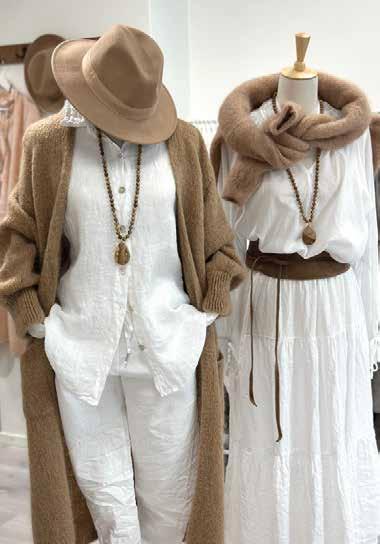
THE MOST STYLISH LINEN CLOTHING FOR WOMEN THIS SUMMER!
Enjoy timeless fashion and the comfort of natural materials. Explore our wide selection and find your favorite summer look!
Yliopistonkatu 18, 20100 Turku kauppa.wilhelmiina.net
Open Mon–Fri 10–18, Sat 10–16

TIMES-LEHDET TAVOITTAVAT KOLME MILJOONAA HOTELLIYÖPYJÄÄ VUODESSA
Varmista näkyvyytesi: Puh. 045 656 7216 | Puh. 040 481 9445

Single ticket (valid for 2h) € 3,15


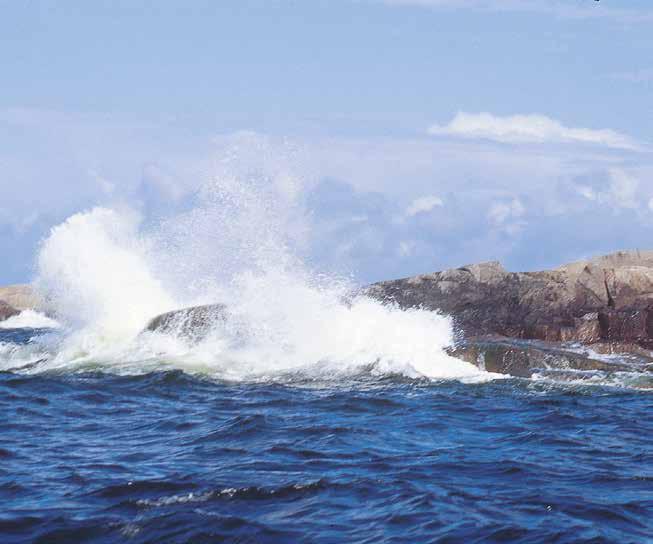


1229
The Pope orders the bishopric to be moved from Nousiainen to the new city of Turku. By the river Aura in Koroinen, there is a white memorial cross standing in the place where the Bishop’s little castle once was. It is a nice place to visit, as is the entire riverbank, where one can walk or go jogging.
1300
The Turku cathedral is inaugurated. It is the most beautiful cathedral in Finland. Not least because it is also the only proper cathedral in Finland.
1308
The first documented mention of the Turku Castle, although the construction probably began as early as the 1280s. Builders in Turku were in no hurry, as the castle wasn’t completed until 1588. The most magnificent Renaissance period in the history of Finland was seen in Turku castle during the reign of Catharina Jagiellon and Duke John (later king John III) 1562–1563.
1414
The first bridge over river Aura is built. It was called The Pennybridge.
1500
Turku is not quite a Hanseatic city, but almost. It is one of the major cities in Sweden and its international trade is significant.
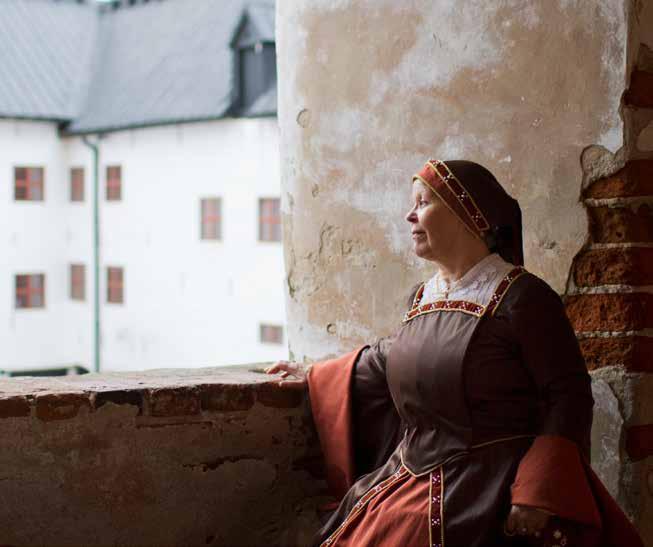
1543
Mikael Agricola, the father of written Finnish, publishes his first book. It is also a milestone of Protestantism in Finland.
1634
The first map of Turku is published, and for a good reason, too: there were already 6,000 habitants, so the city was huge!
1640
The University of Turku is established. Nowadays, Turku is still a renowned city of higher education with more than 40,000 students studying at six universities.

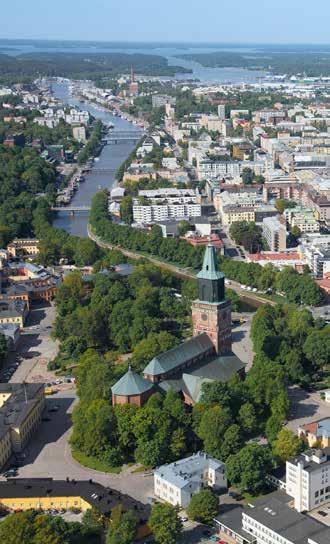
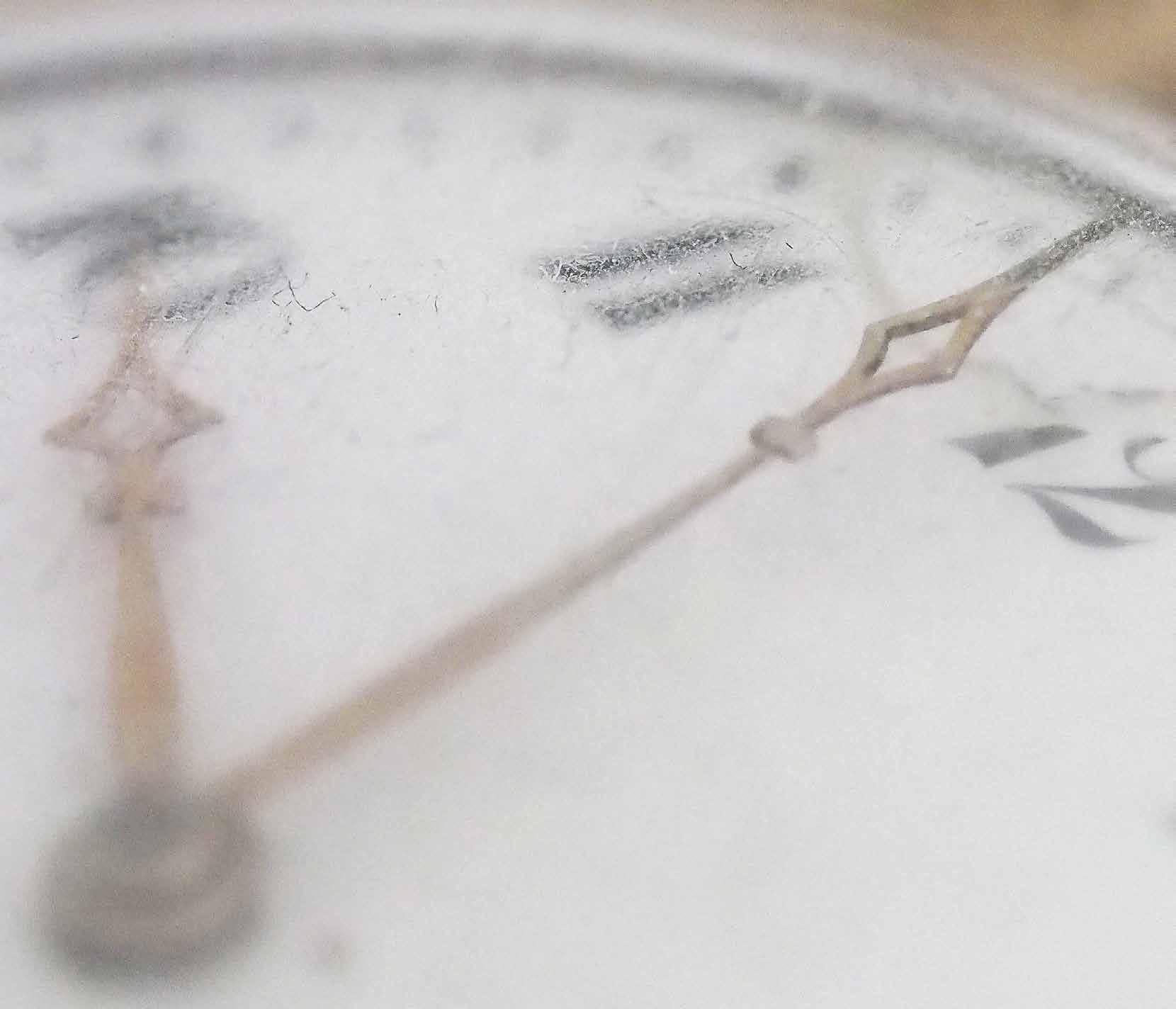



Written by roope Lipasti
Finlands first printing house is established in Turku. It prints books, among them the thesis Aboa Vetus et Nova by Mr Daniel Juslenius (1676–1752), in which he studies the birth of Turku. His conclusion was that the people in Turku are decendants of Jaafet, the third son of Noah.
Sweden loses Finland to Russia in 1809, and in 1812 Helsinki is declared as the new capital – something that still slightly upsets people in Turku.
Turku burns down and almost the whole city must be built again, which is the reason why Turku doesn’t have a medieval centre anymore.
The first Christmas tree illuminated with electric lamps is erected in front of the Cathedral. The tradition became regular in the 1930s.
1917 Finland declares independence.
The University of Turku is established again, since the original Academy was moved to Helsinki after the great fire in 1827. Åbo Akademi University, the only university in Finland with Swedish as official language, was founded in 1918. (Åbo is the name of Turku in Swedish.)
Finland is at war with Russia. Turku suffers great damage during the bombings, among other buildings the castle is partly burned.

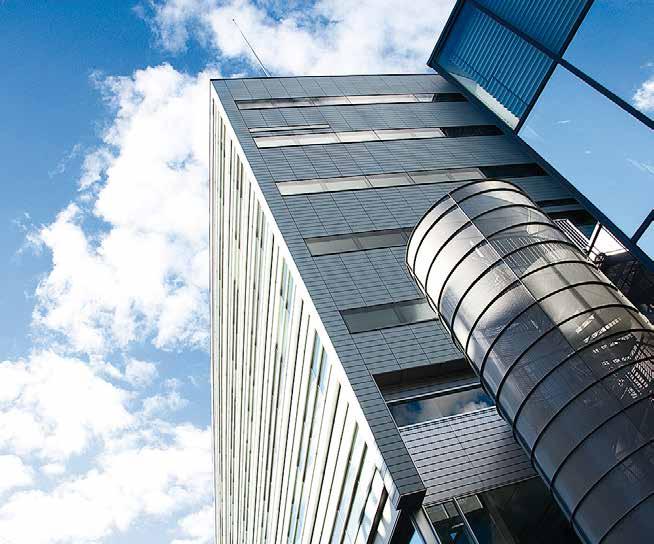
1956, 1976, 1989, 1990, 1991, 1993, 1995, 1999, 2000, 2001, 2010. TPS, the biggest ice-hockey club in Turku, wins the Finnish championship.

Turku suffers from the so called “Turku sickness” – meaning that many beautiful old buildings were demolished in order to be replaced with modern blockhouses.
Turku is the European Capital of Culture.
Turku is the sixth largest city in Finland with 206,000 inhabitants. It also is one of the nicest cities and most popular holiday destinations in Finland, with its historical attractions and magnificent archipelago. s



In the heart of the Old Town
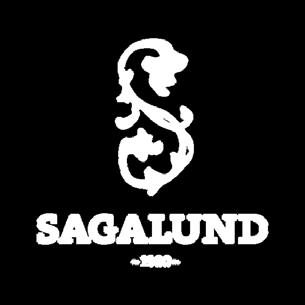
Interesting history of life in a small town in charming surroundings. Souvenirs in the Museum Shop. Opening hours during summer 15.5.–31.8. (closed on Midsummer’s Eve) From Tuesday to Sunday at 11–18 Naantali Museum accepts Museum Card
Mannerheiminkatu 21, Naantali museo@naantali.fi | www.naantali.fi/museo (in Finnish)
Welcome for a coffee or a light lunch, maybe for a glass of wine. Our selection includes fresh sweet and savory pastries, stuffed breads, pies and salads.
Nunnankatu 4
Next to the museum
Aboa Vetus Ars Nova on the riverbank. Café open Mon–Sun 10-17
Turku Main Library, Linnankatu 2–4, library’s courtyard, visit from the riverbank. Café open Mon–Fri 9–20,Sat–Sun 11–17
Modern wooden pavilion at Turku Market Square, at the corner of Eerikinkatu and Kauppiaskatu.
Café open Mon–Sat 9–20, Sun 10–20


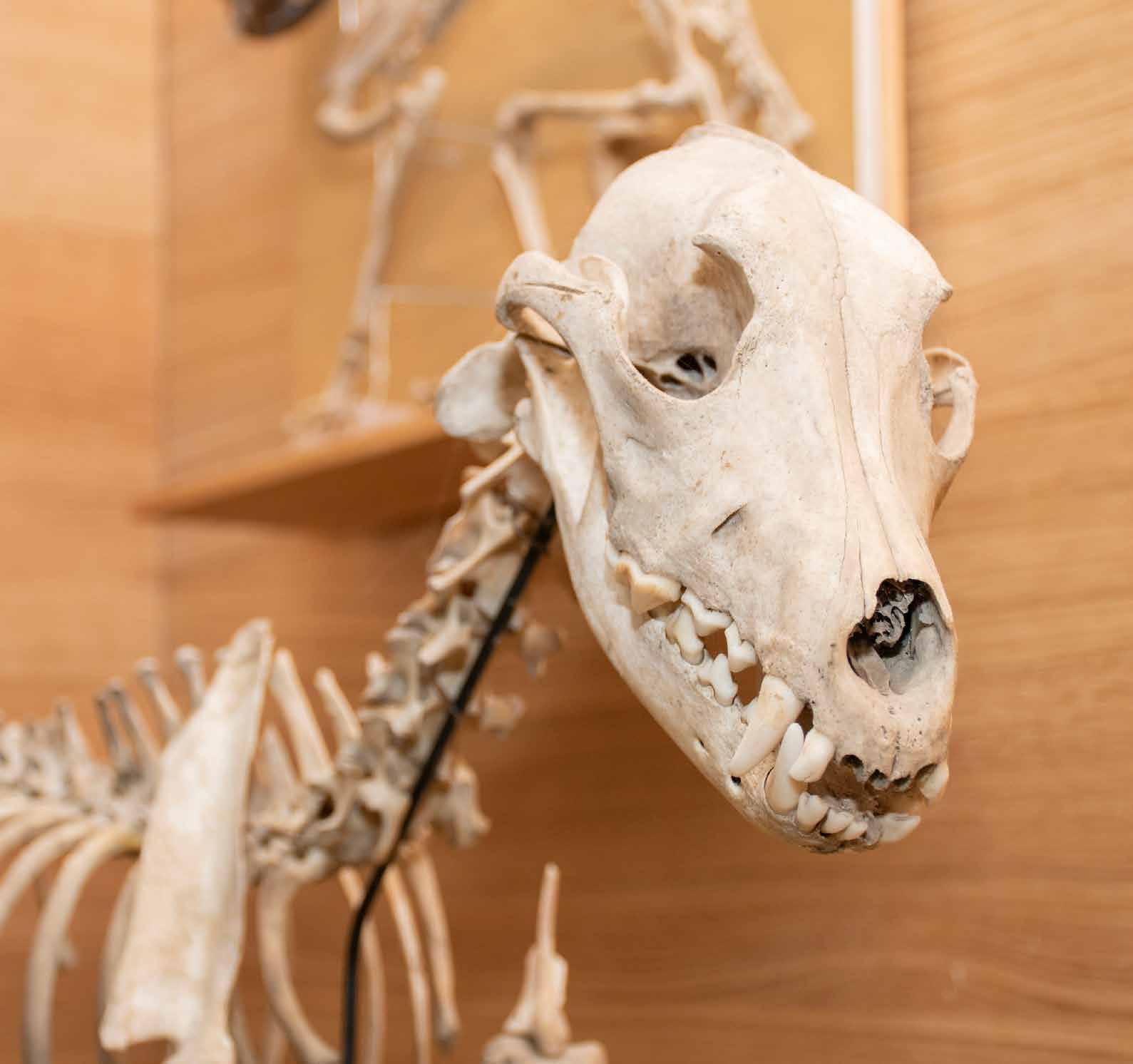
How did your great-great-greatgreat-great-great-great-greatgreat-grandmother live? Some clues can be found in the new exhibition at the Aboa Vetus Museum.
Written by eMMa VironMäki
If your gr AN dmotH er happened to be a bourgeois lady in Turku around the 17th and 18th centuries, we know that she might have been an avid reader and corresponded with relatives and business partners (only if she was a widow, as women were not otherwise allowed to engage in business). In her spare time, she might have played dominoes or other parlor games and enjoyed the occasional schnapps for her health. She probably also had pretty pieces like pearly buttons on her clothing.
All the above-mentioned artefacts (man-made objects) can be seen in Aboa Vetus, the only archaeological museum in Finland, located by the river Aura in the centre of Turku.

About HAlf of tHe museum is dedicated to the Middle Ages and half to the bourgeois life of this former capital in the 17th and 18th centuries. Bourgeois because the archaeological excavations conducted in the museum area show that it was inhabited by merchants, church clerks, and employees of the Academy of Turku at the time. From their servants, who may have lived in the same buildings, very little has remained.
At the museum you can also learn about archaeology, osteology (the study of bones), study old city maps from 1638 to 1827, experience all the fires and other devastations that Turku has lived through, and see how the medieval Turku Cathedral has changed over the seven centuries.
Archaeologists deduce how people used to live based on fragments and artefacts found in the soil. Sometimes those are pure rubbish –stuff that people before us have discarded. Our ancestors also used every piece they owned until it no longer had any use value.
However, piles of rubbish are a treasure trove for archaeologists, which is why archaeology has earned the nickname “the science of rubbish”. At Aboa Vetus, you can see the contents of a genuine pile of garbage dating back to around 1500, which was discovered during archaeological excavations on the museum grounds.
Over 1,000 kg of bones have been found in the museum area. From bones, archaeologists can study what people ate and from the fragments of a bowl, where the bowl was made, and thus its manufacturing and possible import. From pieces of leather, it is possible to find out what kind of clothing was worn. In fact, the museum has a nearly intact pair of leather shoes on display.
Turku has burned down so many times that intact objects are rare. The finds are small bits and pieces, even as small as individual seeds. Most of the finds date from the 17th and 18th centuries; the further back in time we go, the less “stuff” has been preserved.
Alas, Turku’s fate has always been fire. During its existence, there have been over thirty fires that have destroyed various parts of the city.
Turku is the former capital and the oldest city in Finland. It was founded around the year 1300 and was mentioned in a written document for the first by Pope Gregory IX in 1229, which is the date the city’s official celebration of 800 years is based on. When the current capital Helsinki was still farmland and forest, Turku was a blooming city with restaurants, an active social life, export and import activities, and Finland’s first university, currently known as the University of Helsinki.
Alas, Turku’s fate has always been fire. During its existence, there have been over thirty fires that have destroyed various parts of the city. The biggest, known as the Great Fire of Turku in 1827, led to the relocation of the Academy of Turku to Helsinki, which had some twenty years earlier become the new capital.
After centuries of being part of Sweden, Finland was annexed by Russia in 1809, and Russia wanted the capital to be closer to itself. Turku is located on the southwestern coast of Finland, only a short distance from Stockholm, the capital of Sweden.
The loss of the Academy to Helsinki and its archives of almost 200 years of research to the fire led to a halt in the dynamic development of Turku. The bishop’s seat remained in Turku, but the Academy took with it the bustling student life, visiting researchers and highly educated inhabitants to the new capital, Helsinki. s
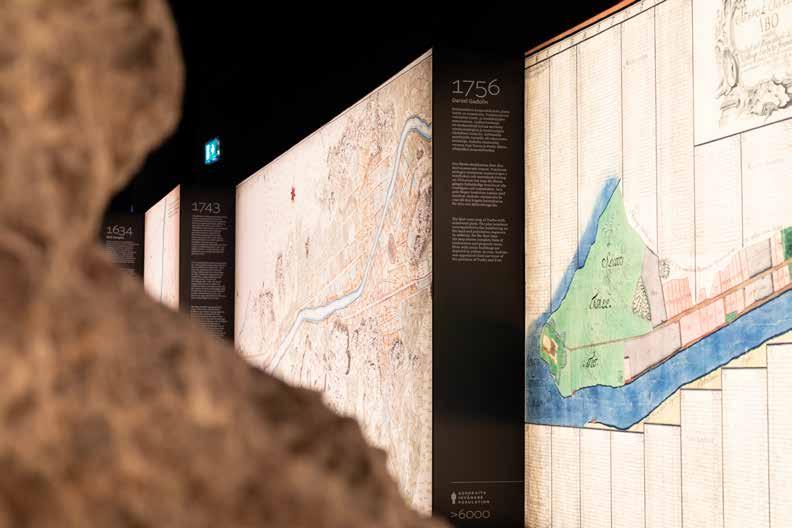
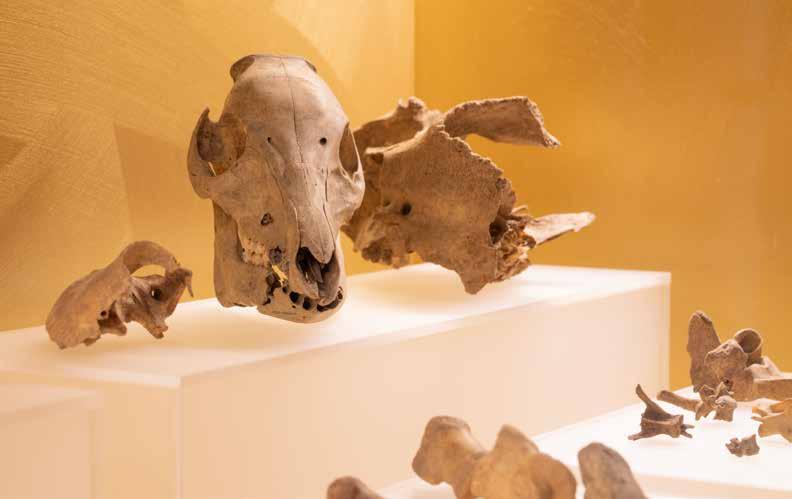

Aboa Vetus Ars Nova (literally Latin for “Old Turku New Art”) is a museum of archaeology and contemporary art, celebrating its 30th anniversary in 2025. To mark this special year, the archaeological exhibition in Aboa Vetus has undergone a total remake. The museum’s restaurant has also been entirely renovated. Ars Nova’s art exhibitions showcase contemporary artists as well as the museum's art collection.
The archaeological part of the museum is built around actual ruins, medieval cellars, and basements that were accidentally discovered in the mid-1990s during the construction of the art museum. The oldest of these cellars dates back to 1390, and you can step inside and imagine your forefathers running up the stairs, listening to their footsteps on the medieval street that runs in the middle of the museum.
A small section of the museum, called the Bone Garden, is dedicated to skeletons, bone finds, and osteology. Another section, the Botanical Garden, is dedicated to plant-based finds like seeds and nuts, as well as health waters (even radioactive water) that were a health trend in the 19th century.
There is also an archaeological corner where you can learn about different fields of archaeology and see the tools archaeologists use in their work. In the small chapel dedicated to St. Anne, you can light a candle – there has never been a chapel in that cellar, but it is nevertheless quite an impressive space. You can also see in 3D how Turku Cathedral has changed since its first wooden form in 1300.
Welcome to the oldest city in Finland!

ABOA VETUS ARS NOVA
MUSEUM OF ARCHAEOLOGY AND CONTEMPORARY ART
Itäinen Rantakatu 4–6, Turku | tel.: +358 207 181 640 www.avan.fi | info@avan.fi
Opening hours Tue–Sun 11 am–6 pm
Tickets
Adults, combination ticket 20 €
Aboa Vetus 14 € / Ars Nova 14 €
Children, 7–15 years 8 €
Children under 7 years 0 €
ON THE MAP (PAGE 21).

Earlier this year, the online publication TasteAtlas ranked the world’s worst-tasting foods, and Finland won – whoo-hoo! More specifically, the winner was the traditional Finnish dish veripalttu. The title was undoubtedly deserved. Veripalttu, a kind of blood pudding, contains beef or reindeer blood, rye and wheat flour, and water and tastes just as good as it sounds. If you’re unlucky enough, you might come across this dish in North Ostrobothnia.
In any case, it feels good to win. Though there are plenty of other traditional foods in Finland that also would have stood a good chance in the competition.
For example, the word klimppisoppa, ‘clump soup’, alone is enough to make older folks in Finland still shudder. It’s made by boiling beef bones or beef shoulder, and the clumps – balls of wheat dough – are added at the end. The finished dish looks like vomit. It’s a South Ostrobothnian idea of tasty food.
Meanwhile, Savo’s gift to the world is mykyrokka. It’s a soup that contains potatoes, meat, heart, offal and dumplings called myky. The dumplings are clumps (more clumps!) made from flour and blood, which are cooked in boiling water.
And what about the traditional Turku – or more broadly, Western Finnish – dish, kaljavelli? It’s a soup made from home-brewed small ale, raisins and cubes of leipäjuusto, ‘bread cheese’. The question arises: why?
Fortunately, Finland has better things to offer, as well. The following foods are genuinely delicious and things that a tourist should try at least once.
Sautéed reindeer, a dish from Lapland, is made from reindeer round steak. But despite its main ingredient, it can be found all over the country. On the side, you’ll need a mash of delicious ‘Puikula’ potatoes
and lingonberry jam. ‘Lapin Puikula’ potatoes are grown specifically in Lapland, and are yellower, sweeter and tastier than potatoes from elsewhere in Finland. The excellent qualities of this old potato variety are a result of Lapland’s bright summer nights and short growing season, which requires that the potatoes be harvested early, before their sugar has had time to turn into starch.
Karjalanpiirakka
Karelian pasties have a rye crust filled with rice porridge. Karelian pasties are a funny-looking food, and as the name suggests, they originate from Eastern Finland. These days, however, they’ve spread throughout the country. They’re also a good food if there happens to be a picky child in the family – a Karelian pasty is generally acceptable to everyone. Karelian pasties are eaten with an egg-butter topping: a boiled egg is mashed and mixed with softened butter. This treat is often available at hotel breakfasts.
Rönttönen
A rönttönen is a northeastern version of Karelian pasties: instead of rice porridge, sweetened mashed potatoes or crushed berries are used as a filling. The word itself is quite onomatopoeic and can mean a small or clumsy object, or in some dialects, be used as a vulgar word for female genitalia – the association likely comes from the pasty’s shape.
Kalakukko
Kalakukko is another traditional food from Savo. A kukko is a baked dish with a rye crust that looks like a loaf of bread and usually contains plenty of fresh vendace and fatty side pork. Kind of a food surprise!
Ruisleipä
Finland is the promised land of rye. Finns love rye bread, in particular, which isn’t available in many other countries. Rye bread keeps for a long time and is very high in fiber, which makes it healthy. When Finns move abroad, they usually ask their friends to bring rye bread when they come to visit.
Mustamakkara

idea when it comes to brand associations. When the dish started to be called black sausage, its popularity quickly increased. Black sausage is usually enjoyed with lingonberry jam. For a complete gourmet experience, you should eat it at the market square in Tampere and wash it down with cold milk.
Paistetut muikut
Vendace is a 5–20-centimeter-long fish in the salmon family that lives in schools in lakes and is the most important commercial fish species for professional fishermen in Finland’s inland waters. While particularly common in the Finnish lake region, fried vendace can be found at every major outdoor event in larger cities these days. They are usually eaten with mashed potatoes. A more Helsinki-style version of this is fried herring, which is similarly coated in rye flour and fried.
Salmiakki
Salmiakki is Finland’s national candy. This black and strongly flavored confection is not much liked elsewhere, though it is eaten to some extent in the other Nordic countries and in the Netherlands. It’s worth giving salmiakki a chance, however. And if not as candy, you can also drink it in alcoholic form: salmiakkikossu, which is made by dissolving so much salmiakki in vodka that you can’t taste the alcohol, makes for an excellent shot! It’s so good, in fact, that when it was first launched in the 1990s, it was banned precisely because it didn’t taste like alcohol and was therefore considered dangerous by the authorities. These days, it’s back on the market. Salmiakki is made by mixing ammonium chloride into licorice.
Salmon soup was originally an archipelago dish, but today, you can find it everywhere. In addition to salmon fillets, the soup contains potatoes, carrots and leeks – and cream. It’s often eaten with saaristolaisleipä, ‘archipelago bread’, a malty rye loaf sweetened with syrup.
Tampere’s gift to the world: a black sausage that looks suspicious, but tastes good! In the ’80s, this food was still referred to as kuuma sian verimakkara, ‘hot pig’s blood sausage’, which was maybe not the best
Blueberry pie is the perfect ending to any summer meal. Finnish blueberries, or more precisely, bilberries, are small, but that makes them all the sweeter. Blueberry season usually starts in July. Finland’s ‘Everyman’s right’ guarantees that anyone can go into the forest to pick berries. In a pie, the berries really shine! s





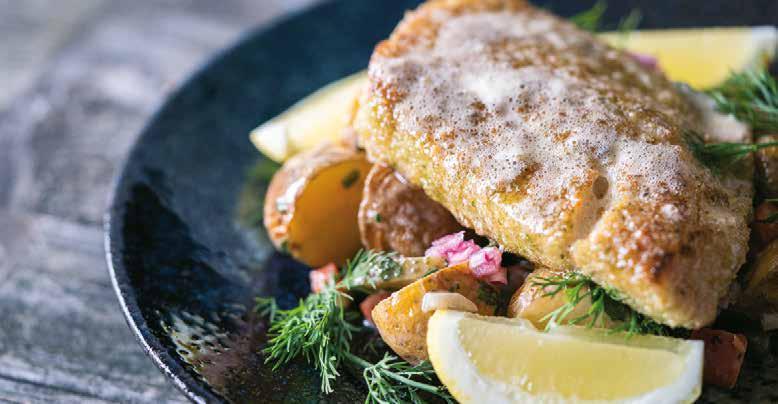
The absolute best fish and seafood lunch in town. You are warmly welcome.
Open mon-sat 11-15
Located in Turku Market hall. Eerikinkatu 16


Intian Helmi brings you the finest Indian cuisine With over 15 years of experience come and indulge in our authentic Indian dishes. Freshly p traditional techniques, a clay ov flavours and the blends of differe famous all around the world and c right here.
Brahenkatu 14,





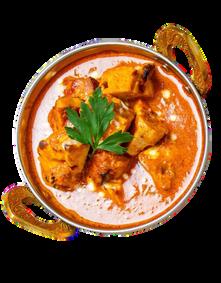


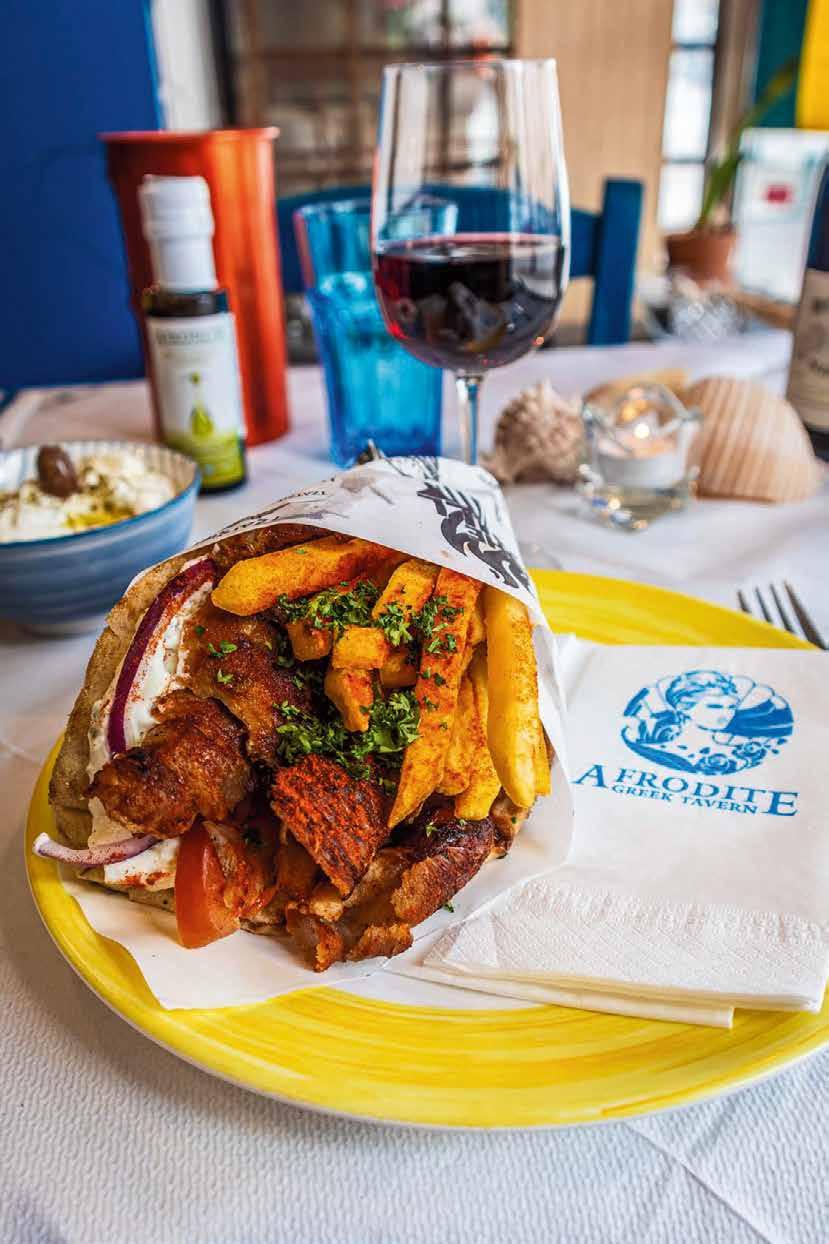
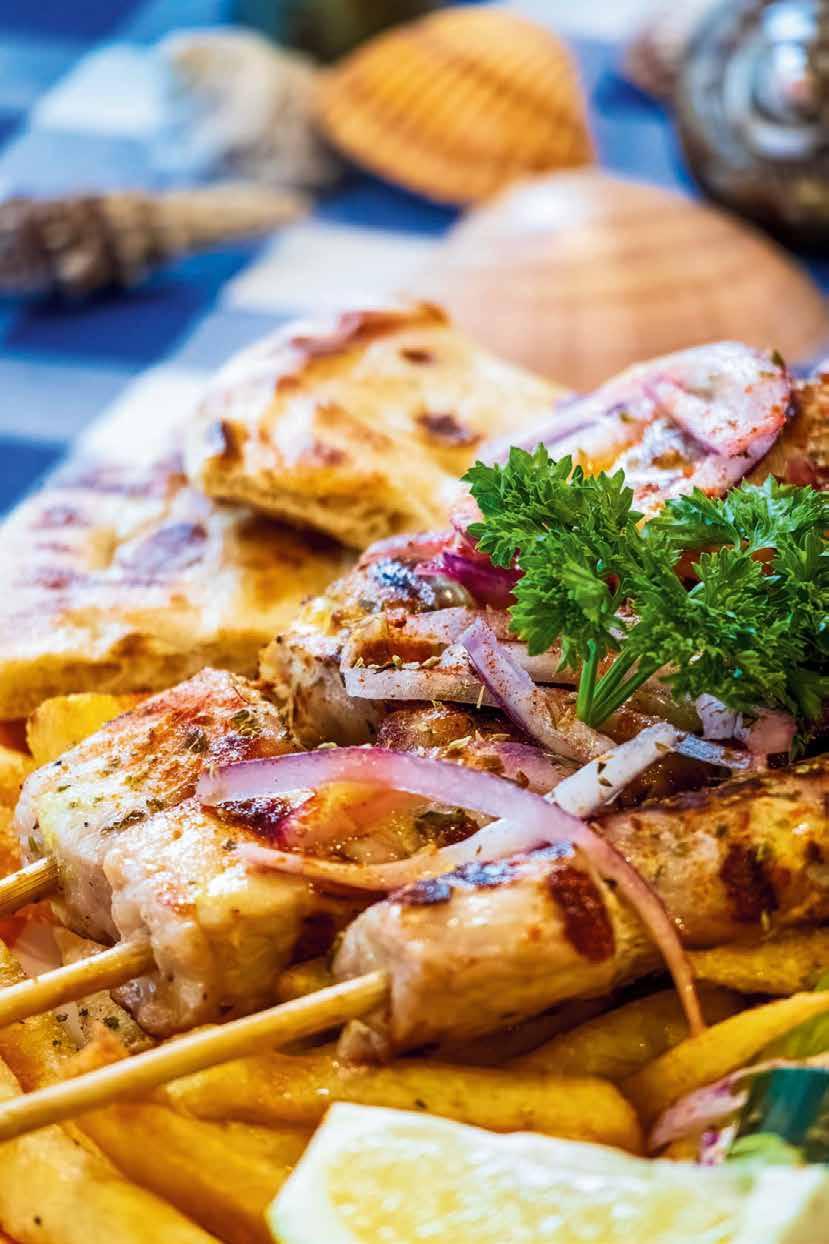


Alvar Aalto (1898-1976) is Finland’s most internationally renowned architect. His works can be found all over the world, but of course especially in Finland. Aalto liked publicity and was, in a way, a rock star of his time, so many anecdotes and stories about him have survived. Here, we’ve collected some of the best.
Although Alvar Aalto’s career as an architect was, for the most part, an exceptional success, there were also setbacks over the years. His first real functionalist-style work was the Maalaistentalo in Turku. The building included a theater that turned out to be far from functional. For example, 50 of the seats in the theater came to be known as “Aalto’s seats,” for which tickets could not be sold because nothing at all could be seen when sitting there. And that’s not all. During construction, the theater director pointed out to Aalto that the heavy concrete structures would make for terrible acoustics. Aalto wasn’t bothered by the claim. He took out a cigarette case, wrote some numbers on it, did a few calculations, and concluded that the acoustics of the theater would be great! The director of the theater later said that the most fitting punishment for Aalto for his design of the theater would be to make him work there.
The maestro must have used those same cigarette-case calculations for Finlandia Hall, whose acoustics were anything but great. Though it’s worth remembering that Finlandia Hall was built for the 1975 meeting of the Conference on Security and Cooperation in Europe, so it was the building’s acoustics for speech, not for music, that would have been important.
A Alto WAs AN AVid cinephile and involved in establishing the country’s first film club in Helsinki. When there was a problem with the club’s permits, the matter ended up in court, and Aalto made such a long speech in defense of the art of cinema that the judge started doodling stick figures and finally cut off the architect’s rambling. The club was shut down anyway because it had screened the works of Russian revolutionary directors, which was too radical for the 1930s.
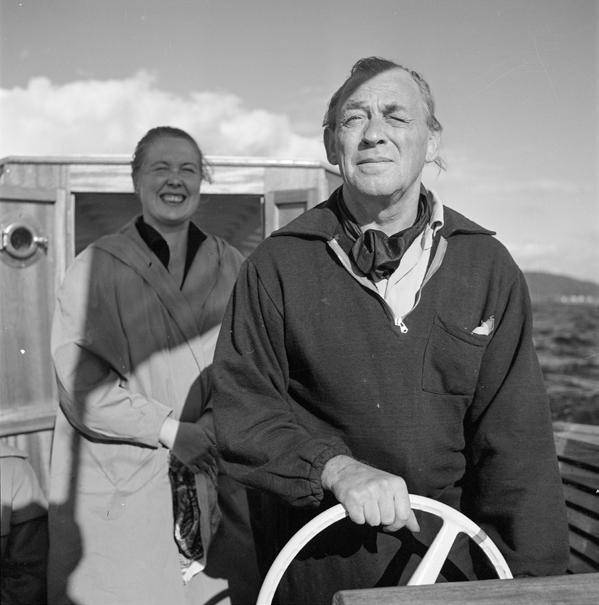
The world’s smallest Aalto vase was created in 2008, standing 600 nanometers tall. If you wanted to use it to fill a liter-sized Aalto vase with water, you would have to make ten million billion trips to fetch water. Aalto was also one of the founders of the design company Artek, which still manufactures furniture designed by Aalto at the Korhonen furniture factory near Turku. However, Aalto didn’t design everything on his own: his first wife, Aino, and his second wife, Elsa-Kaisa, known as Elissa, made significant contributions to Aalto’s success, but as is often the case in women’s history, their contributions have only been recognized in recent years.
It also wasn’t a particularly good idea to irritate Aalto. Once, at a Nordic meeting of architects, he was accused of being a communist and immediately responded by physically attacking the critic. Aalto really wasn’t a communist, and he had fought on the side of the Whites in the Finnish Civil War.
AAlto WAs A pioNeer in many ways. For example, he developed an apartment building that was constructed from elements, which was practically unheard of in the 1920s. He also designed house plans for Finland’s postwar reconstruction that were standardized and easy to build – the kit homes of the time.
On the other hand, Aalto also designed very unique projects. For example, the Paimio Sanatorium is one of the most important functionalist buildings. It’s a complete work of art, for which Aalto designed everything possible himself, including the interiors and furniture.
At one point, when the hospital was being renovated, the original bent plywood armchairs, the so-called Paimio chairs, were thrown into a dump without a second thought. Collectors came to recover them in the dark of night. It was a smart move: these days, the chairs can go for thousands of euros at auction.
When Aalto traveled abroad, he always held a press conference when he returned to Finland.
IN AdditioN to buildings, Aalto designed furniture and household items that are still fixtures in Finnish homes. For example, every Finn knows the Aalto vase. One version of the vase’s origin story is that Aalto’s father was a land surveyor, and when Alvar accompanied him in the field as a little boy, he became familiar with topographic maps, whose contour lines eventually inspired the shape of a vase. The other theory is more straightforward: when Aalto entered the vase in a design competition, he named it “Eskimo woman’s leather pants.” The vase is supposedly the shape of stiff sealskin pants when you’ve taken your legs out of them.
IN tHe old dAys, things had to be durable, so Aalto and furniture manufacturer Otto Korhonen tested the durability of their world-famous three-legged stool by throwing the prototype at the floor with all their might to see if it would last. It did.
When their first three-legged stool was complete, the men were extremely satisfied with the result and projected that sales could very well number in the thousands. To date, more than a million stools have been produced, with no end in sight.
In terms of volume, the second-most popular Aalto piece of furniture is a regular side chair, like those found in churches, libraries, and the like. Its genius was that the chairs could be stacked, making them easy to store when not in use.
AAlto kNeW He was a good architect, and he didn’t keep his light under a bushel basket. For example, Architectural Review once sent him a questionnaire about the significance of public buildings in architecture. Aalto replied that he would rather let his buildings speak for themselves.
When Aalto traveled abroad, he always held a press conference when he returned to Finland. In addition to making known the important fact that the maestro had returned home, he usually had things to say about the latest trends in world architecture.
Aalto was also careful that everything was done exactly as he intended. When he drove past Säynätsalo Town Hall, which he had designed, he saw that neon lights had been mounted on its walls – without his permission. So he threw stones at the lights to break them.
This probably explains why the Italian marble that forms the facade of Finlandia Hall and cannot withstand the Finnish winter and warps has already had to be replaced twice now, and both times, it has been replaced with the same Italian marble that cannot withstand the Finnish winter and warps.
A little petti N ess was apparent when Aalto named his boat “No man is a prophet in his own land” – albeit in Latin (“Nemo propheta in patria”). That certainly wasn’t at all true in his case. A few years ago, the Aalto vase was voted the country’s most beloved design object, and on the list of the most important people in the history of Finland, Aalto came in at 33, the highest-ranking architect. s

Would you like to return to your eternal
Did you know that the secret to eternal youth was actually invented a long time ago? And that this invention is available right now? In fact, you may have this miracle close at hand this very minute! Because I strongly suspect that a bottle of elixir of youth, or at least of rebellion, is hidden somewhere in your hotel room – in the fabulous and wonderfully crisp sheets, the plush towels, or those tiny soap bottles that the cleaner has arranged so beautifully on the counter just for you.
And why do I suspect this? Because I’ve experienced this miracle for myself.
I have two school-age children, and when they were younger, I would occasionally go to a hotel to write my books. I’m sure that anyone who has ever had small children understands why. I called these escapes of mine “sh*t mom” holidays because, in addition to working, the intention was to lie in front of the television with hamburger sauce on my face and take naps whenever I felt like it. Heck, yeah. Yet, against all expectations, I swear that I’ve never gotten so much work done!
During my hotel stays, I noticed that not only my physical form but also my brain reversed in age, straight back to the ’90s. I felt as if
yourself!
I had returned, if not to my wild youth (I barely left my room – it was coronavirus times), then at least to a youthful lack of responsibility: no cleaning, let alone cooking. The envelopes bearing electricity bills and dentist appointment reminders didn’t make it to my door, and I showed up for breakfast hopelessly late. And when I got there, what did I eat? A plateful of chocolate waffles!
After breakfast, I lazed in front of the television (okay, I suppose young people these days laze in front of their phones, but I was returning to my youth, not theirs). If I had wanted to, I could have sneaked out into the alluring nightlife of the city and come home through the back door without anyone ever catching me. Another thing I did regularly in my youth. Although back then, I used to climb out the window of my childhood home because it was a much quieter way to sneak out (yes, I was trouble as a teen, but more on that some other time).
You migHt tHiNk that all this lack of responsibility would have made it more challenging to get any work done, but you’d be surprised. As I said, I’ve never written so much in just a few days! When I knew that I could work at my own pace and that the point was also to rest, I

I think that taking a couple of nights away, a “sh*t mom” holiday, as I call it, should be required by law, or at least be a taxdeductible work benefit.
dove into my work without even realizing it. Finnish brain researcher Mona Moisala has said that you should do something restorative every 90 minutes during the workday. And because my own brain finds returning to the self-centered, housework-resistant years of the ’90s so restorative, in just a few days I ended up creating more Finnish children’s literature than I had in a long time!
A few years ago, I heard about a retired woman who sold her apartment and belongings and moved into a hotel. She took only a few personal belongings with her – only the things she needed. At first, I thought, whoa, bold move, and I wondered what life would be like without snow shoveling and cleaning days. Quite restorative, I bet! How much work would she be able to get done, if she wanted to?
I think that taking a couple of nights away, a “sh*t mom” holiday, as I call it, should be required by law, or at least be a tax-deductible work benefit. It would be for the good of Finland! If each of us could take a break from being the project managers of our own lives from time to time to live the wonderfully messy, responsibility- and bill-free life of a teenager, I think Finns’ fatigue would decrease by about 1,100 percent, and productivity would increase at the same rate. That should do something for the GDP and national debt, don’t you think? s

Hannele Lampela is a children’s author from Loviisa, known for her stories about Princess Pikkiriikki (Itty Bitty Princess) and Paavali Pattinen (Benjamin Bateman). Hannele loves her work – especially if she gets to sleep in a hotel on a regular basis.


Tšekkiläistyyppinen seurusteluravintola cityhospoda.fi

Over one hundred beers from all over the world
Eerikinkatu 16 Turku, Kauppahallin vieressä

Eerikinkatu 19, Turku 60°26'96"N 22°15'78"E









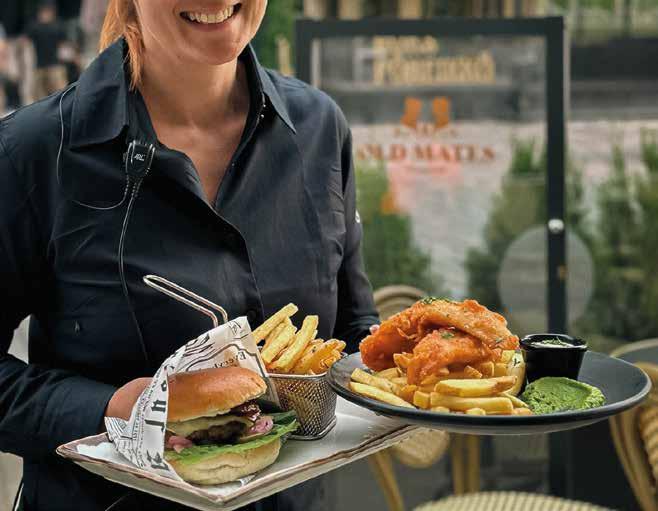
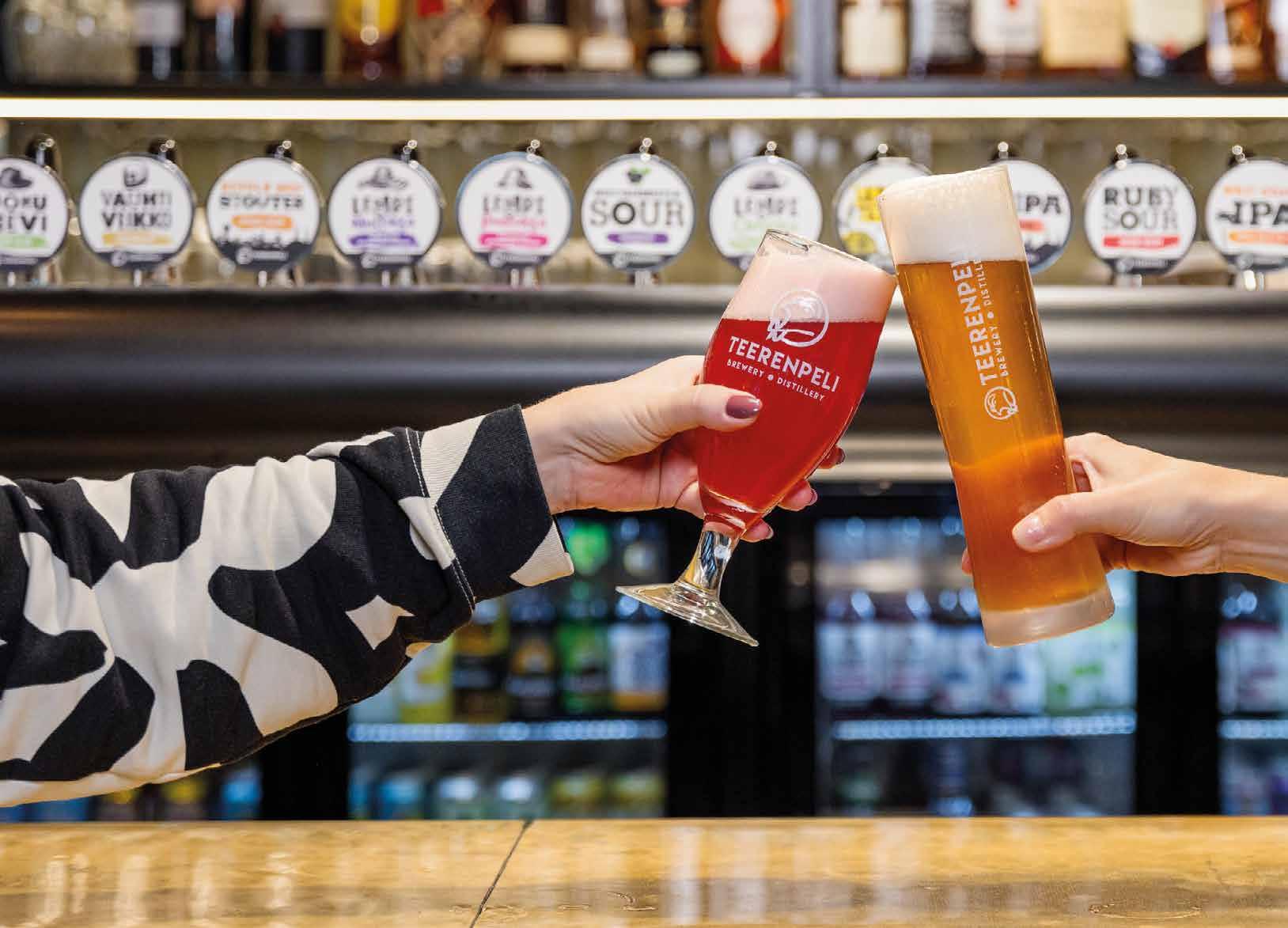

Clothes Shopping
Over 30 fashion stores.

Delicious Food 15 restaurants and cafes.
Home and Decor 10 stores large and small.
Free Parking
2,400 free parking spaces, 33 charging stations.





